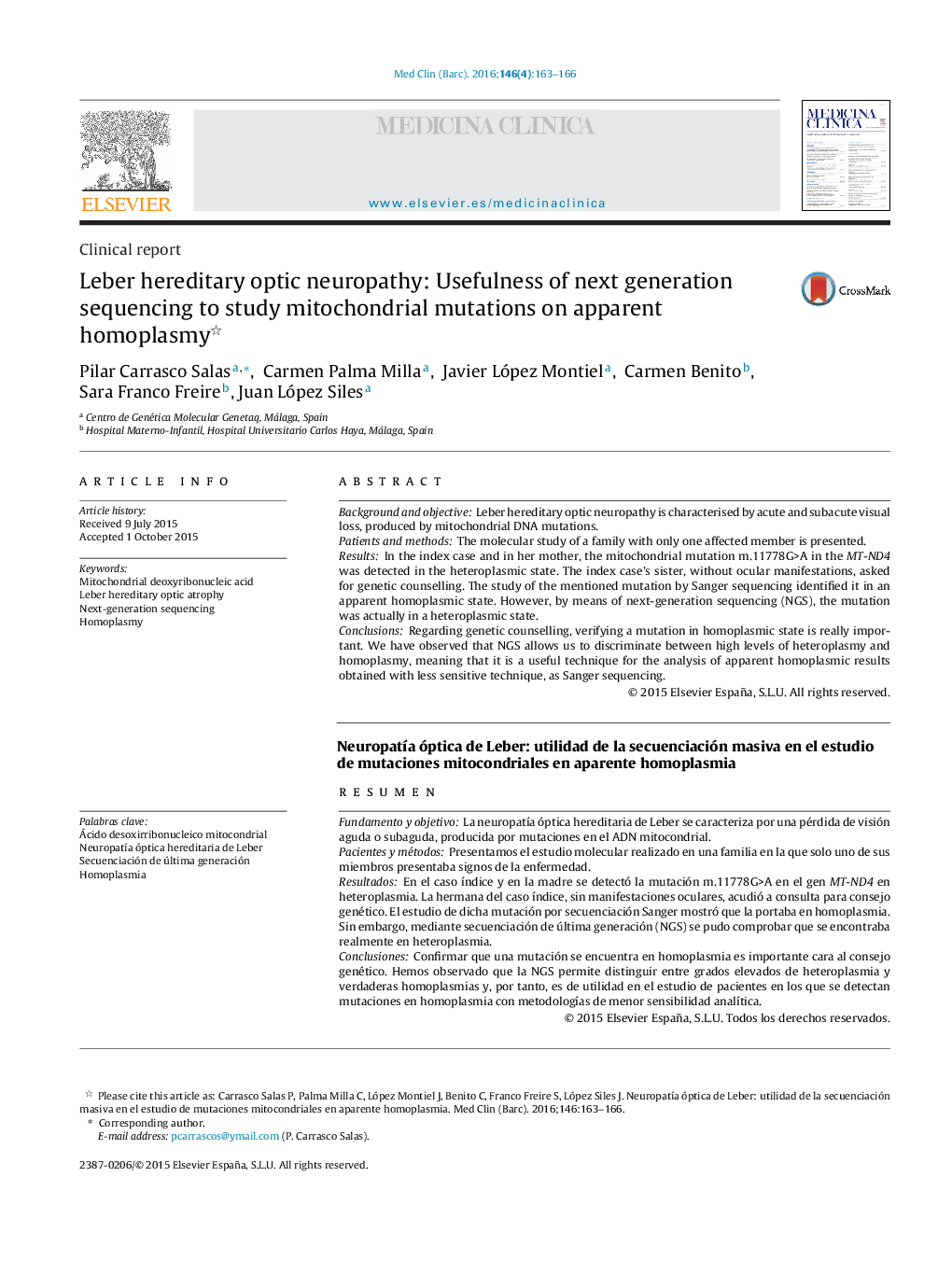| Article ID | Journal | Published Year | Pages | File Type |
|---|---|---|---|---|
| 3804316 | Medicina Clínica (English Edition) | 2016 | 4 Pages |
Background and objectiveLeber hereditary optic neuropathy is characterised by acute and subacute visual loss, produced by mitochondrial DNA mutations.Patients and methodsThe molecular study of a family with only one affected member is presented.ResultsIn the index case and in her mother, the mitochondrial mutation m.11778G>A in the MT-ND4 was detected in the heteroplasmic state. The index case's sister, without ocular manifestations, asked for genetic counselling. The study of the mentioned mutation by Sanger sequencing identified it in an apparent homoplasmic state. However, by means of next-generation sequencing (NGS), the mutation was actually in a heteroplasmic state.ConclusionsRegarding genetic counselling, verifying a mutation in homoplasmic state is really important. We have observed that NGS allows us to discriminate between high levels of heteroplasmy and homoplasmy, meaning that it is a useful technique for the analysis of apparent homoplasmic results obtained with less sensitive technique, as Sanger sequencing.
ResumenFundamento y objetivoLa neuropatía óptica hereditaria de Leber se caracteriza por una pérdida de visión aguda o subaguda, producida por mutaciones en el ADN mitocondrial.Pacientes y métodosPresentamos el estudio molecular realizado en una familia en la que solo uno de sus miembros presentaba signos de la enfermedad.ResultadosEn el caso índice y en la madre se detectó la mutación m.11778G>A en el gen MT-ND4 en heteroplasmia. La hermana del caso índice, sin manifestaciones oculares, acudió a consulta para consejo genético. El estudio de dicha mutación por secuenciación Sanger mostró que la portaba en homoplasmia. Sin embargo, mediante secuenciación de última generación (NGS) se pudo comprobar que se encontraba realmente en heteroplasmia.ConclusionesConfirmar que una mutación se encuentra en homoplasmia es importante cara al consejo genético. Hemos observado que la NGS permite distinguir entre grados elevados de heteroplasmia y verdaderas homoplasmias y, por tanto, es de utilidad en el estudio de pacientes en los que se detectan mutaciones en homoplasmia con metodologías de menor sensibilidad analítica.
